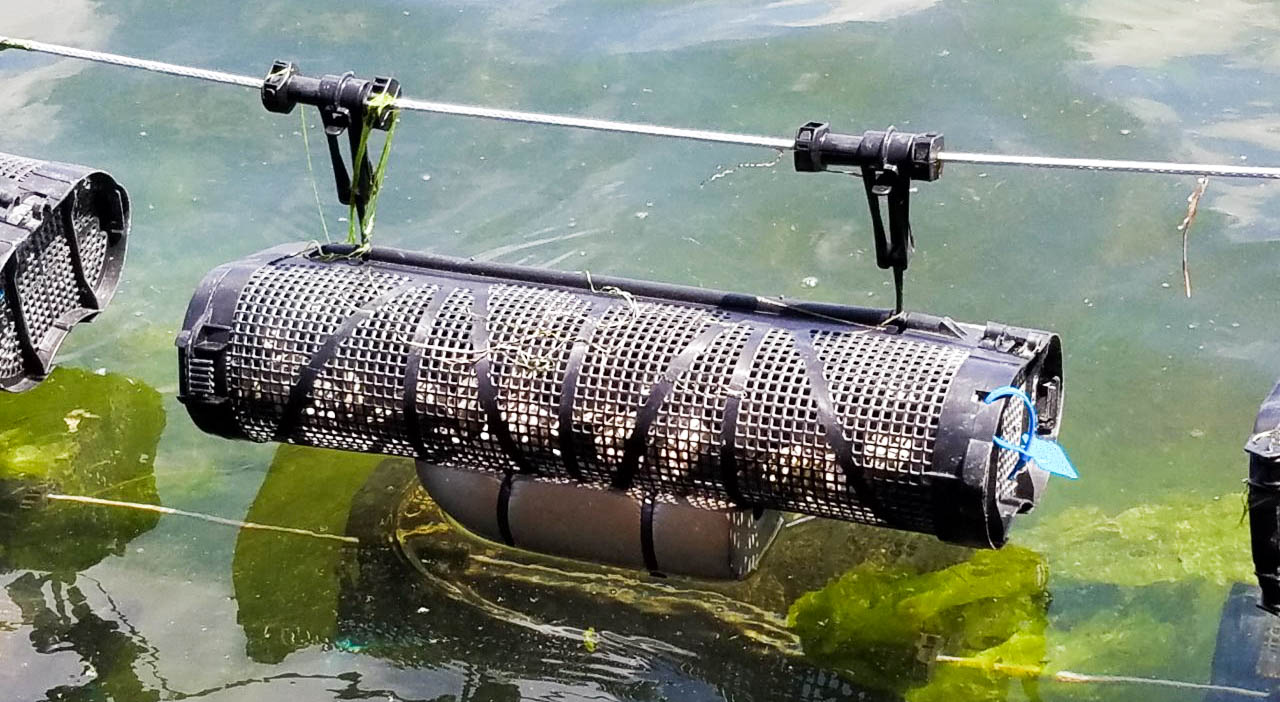Intertidal longline farming Overview
This is another suspension method where adult oyster shells with baby oysters set on them and are then inserted into the strands of a rope. The shells are spaced out every foot or two along a 300-600 foot rope. The rope is then stretched along the ground in the intertidal region at low tide and supported about a foot above the ground with pegs. The end result is that the entire length of rope and shell is suspended above the natural bed allowing for the oysters to grow faster than if they’d settled down into the mud or sand.
For more information on farming oysters, click the following link to visit the Washington Sea Grant site which covers the history of oyster farming in Washington State over the last 100 years.
These are longlines with mother shell or oyster "cultch" laced into the line. These longlines will have oyster larvae set on them at Coast Seafoods shellfish hatchery.
Oyster shell is used for "cultch", and once the oyster larvae settles on the shell it is referred to as spat or seed. Note the dark spots on the oyster shells, they are all individual oyster spat.
Longlines with spat set on the cultch are transplanted later for grow out in the Willapa Bay area of Washington's Pacific Coast and also down in Humboldt Bay in California.
The longline keeps the oysters off the bottom which allows for them to grow faster and helps prevent some predation. Longlines are harvested by cutting the rope loose from the beach and loading them onto barges to be floated out on the incoming tide.
New systems have been developed for Inter-tidal longline culture that have been proven sustainable. These new systems using SEAPA baskets and Flip bags allow eel grass to develop and sustain sea life such as crabs and other organisms. SEAPA and Flip bags are the future of intertidal longline farming due to their sustainable nature the ability for sea life to develop amongst it.




